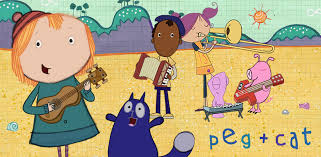
Limited vocabulary development in children from families of low socio-economic status can delay learning and create a word gap that widens as they reach school age.
New research from Vanderbilt Peabody College of education and human development asks whether the use of an enhanced electronic book can train parents in reading methods that facilitate parent-child conversations, which are known to spur preschool vocabulary development and the language processing skills necessary to close the word gap.

In a study published in Early Childhood Research Quarterly, Georgene Troseth, associate professor of psychology, and her research team1 investigated whether a questioning character in a narrated e-book could help promote conversations between parents and children while reading. Talking about books can challenge children to use a more diverse vocabulary than they typically hear or use in conversation with an adult.
“Topics of books are broader than what we normally talk about in daily life,” Troseth said. “Tugboats and caterpillars, wild animals and distant cultures bring up a wider range of words than is typical in daily activities. When a parent asks a question [about a book], the child has to go into their long-term memory of words, their lexicon and their grammar, to say what they want to say. It gives the child practice in all the language skills they will need.”
Troseth and her research team designed an enhanced e-book to be read on a tablet computer that could teach parents dialogic reading. This method stimulates engagement between the parent and child by asking questions that help the child develop a better sense of how their own life relates to what they read.
A ‘model’ character
 The e-book used in the study is based on the PBS Kids animated series Peg + Cat, produced by Fred Rogers Productions. An interactive character from the series named Ramone, an African American adolescent, was added to the e-book to model dialogic reading techniques for parents.
The e-book used in the study is based on the PBS Kids animated series Peg + Cat, produced by Fred Rogers Productions. An interactive character from the series named Ramone, an African American adolescent, was added to the e-book to model dialogic reading techniques for parents.
Two versions of the e-book were developed. In one, Ramone appears on each page after the story narration, suggesting simple questions for parents to ask. In version two, Ramone suggests questions to elicit more complex responses. Children are asked to make inferences and connections between the story and their own lives. Ramone encourages parents to take over the questioning on the last five pages, or to tap an icon if a hint is needed.
Study participants included 32 children around 4 years of age, along with an adult caregiver, all from families with few socio-economic advantages. Half were from an urban area and half from a small-town, rural setting. A control group of 16 parent/child pairs listened twice to the unmodified, narrated e-book. The other 16 pairs listened to the two versions of the enhanced e-book with the Ramone character. Sessions were recorded and transcribed to count the number of words, unique words, and utterances exchanged as well as conversational turns taken between parent and child during reading.
More talk, better outcomes
“After only reading the book twice, we had our fingers crossed that parents would pick up on the questioning method and that we might get an increase in parent-child conversation,” said Troseth. “But the families who read the e-book with our helpful character in the corner talked three times more than the families who did not have the character. They used significantly wider vocabulary while talking, and there were many more conversational turns of questions and answers back and forth.
“We also analyzed cognitive challenge, looking at the use of harder questions or more linguistically sophisticated questions, and found much more in the experimental group,” she said. “By the end of the second book, where Ramone did not appear, most parents didn’t tap the icon to get a hint. They asked their own questions.”
Troseth and her research team are exploring funding to develop a web-based or downloadable product that models dialogic reading. They hope that the questioning methods learned will mean that parents in the study continue to ask their children questions while reading together and generally, as more conversations between parent and child mean better communication overall.
“We want parents to be able to go beyond this book and use these techniques when they’re reading other books, too,” she said. “And we hope that when they’re making connections between the book and the child’s life, that they will continue to use the same kind of questioning in the car, when they’re watching television together or cooking together, so they get in the habit of asking their children questions about their feelings or about what happens next.”
This study was supported by a cash award from the Health Resources and Services Administration “Bridging the Word Gap Challenge,” U.S. Department of Health and Human Services.
Read “An enhanced eBook facilitates parent-child talk during shared reading by families of low socioeconomic status” in Early Childhood Research Quarterly.
1Additional authors include Gabrielle A. Strouse, MS’07, PhD’11 (assistant professor, University of South Dakota); Israel Flores, MS’17, PhD’20, and Zachary D. Stuckelman, MS’19, current doctoral student (Vanderbilt University); and Colleen Russo Johnson, MS’14, PhD’17 (Ryerson University).